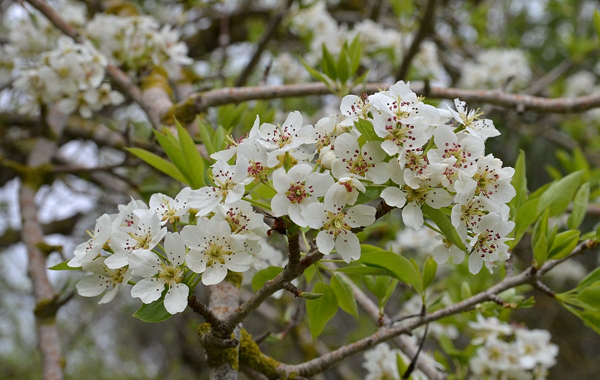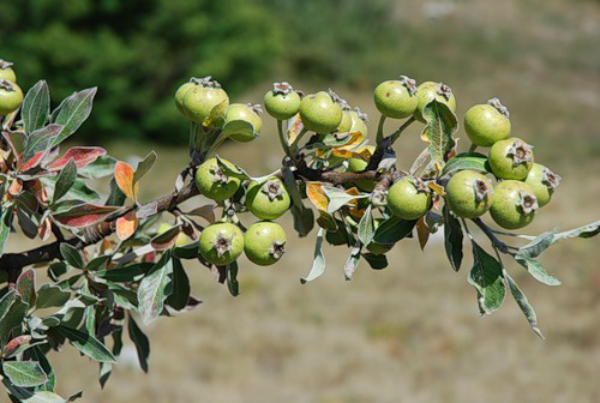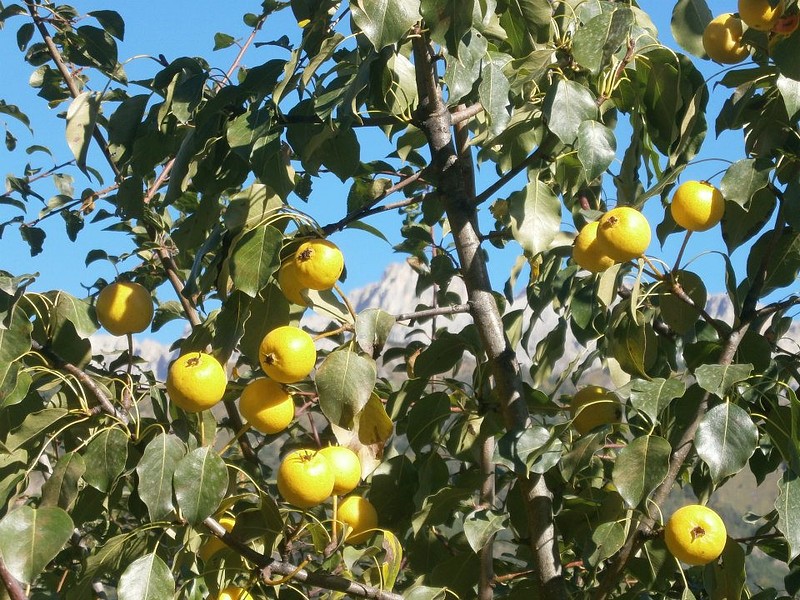The medicinal properties of wild pear
The wild pear is inferior in taste to the fruit of its cultivated counterparts, most of which, by the way, the wild pear is the progenitor. However, in terms of the medicinal properties of its fruits, wildfowl is much superior to breeding varieties and is deservedly popular in folk medicine. The article will introduce you to this wild variety in more detail. You will find out what decoctions, drinks or tinctures can be made from the fruits of this tree and for what diseases they help.
Description and yield
Wild pear occurs in nature in the form of a bush up to 4 m high, or a tree that usually grows no higher than 20 m. This wild species is widespread throughout the south and Central Black Earth Region of Russia, as well as in the Caucasus, Central Asia, and Kazakhstan. Usually grows in deciduous forests as separate trees, and forming whole groves.

Being a wild-growing tree, the tree grows well in partial shade or in areas exposed to sunlight. The ideal soil will be fertile soils with moderate moisture and neutral acidity. Due to the developed root system, the wild game is drought-resistant, and also has a high frost resistance.
Seedlings of this species are often used by many breeders as a rootstock, because the wild game has high compatibility with most cultivars. If you plan to plant a wild variety on your site, choose a place for it near the edge of the forest. Wildlife propagates by grafting, cuttings or seeds.
Begins to bloom in late April with white, less often pink, flowers. This wild species is an excellent honey plant. Trees most often bear fruit at 7-8 years of age, usually at the end of August (but ripening is influenced by weather conditions and the growing region). Fruits are almost round in shape, up to 30 mm in size. A good harvest is repeated every two years. In a productive year, one tree can produce up to 40 kg of fruit. However, the taste of ripe fruits is sour, but they become fragrant and sweet if they lie in a cold room (in the basement) for 2-3 months, because the starch turns into sugar, and the tannins that give the fruit hardness are destroyed.
These trees are long-lived. Usually they live 70-90 years, but there are some specimens up to 300 years old. Cultivated trees live no more than 50 years.
It is worth noting: in addition to the fact that the wild pear is used in folk medicine, the branches of the tree, due to the density and red-brown color of the wood, are popular in carpentry and turning, used for the manufacture of laminated chipboard (laminate).
A photo of a wild pear can be viewed below.

Healing properties
Due to the content of a large amount of useful substances, the wild pear is used in folk medicine: medicinal decoctions and compotes are made from fruits and leaves, tea is dried and brewed.

This wild variety is rich in vitamins A, the group of vitamins B, as well as E, C, P and PP. In addition to vitamins, fruits contain ascorbic, citric, malic and folic acids, as well as glucose, sucrose, fructose, and various trace elements. There are many metals in the wild: zinc, copper, nickel, molybdenum, iodine, manganese, iron, fluorine, so its fruits are often used to treat anemia and thyroid gland when the body lacks its own nutrient reserves.
A medicinal broth from wild pears is an indispensable remedy for indigestion. Due to the content of tannins and pectin, fruits have a strengthening effect, destroying pathogenic bacteria and strengthening the mucous membrane of the stomach walls.Mix half a glass of dried pear fruits, 3 tablespoons of porridge, oatmeal, pour two glasses of water, boil. Let the broth settle for 1 hour, do not forget to strain. Drink 4 times a quarter of a glass every day. The medicinal drink can be consumed by everyone, regardless of age.
Dried wild pear is an excellent prophylactic agent for diseases of the circulatory system, especially for strengthening the capillaries thanks to vitamin P, which increases the permeability of the vascular walls.
For bronchitis, tuberculosis, suffocation, severe cough, baked and boiled fruits help.
Pear juice, as well as a decoction of fresh or dry wild fruits, is a medicinal drink that is used as a diuretic. Thanks to this treatment, kidney stones are relatively quickly crushed into sand and excreted from the body naturally. Also included in therapeutic diets for diabetes. Drink daily 50-70 g of juice half an hour before meals, gradually increasing the dose to 1 glass.

A useful therapeutic effect is provided by the use of wild animals in the treatment of prostatitis. Regular consumption of dried wild pear compote promotes complete recovery and normalization of the prostate gland function. Doctors recommend men over the age of 50 to harvest dry fruits of wild pears for the winter and drink compotes or teas infused with dried fruits for preventive purposes in winter.
Remember the simple rules when you include pears in your diet, otherwise the fruit can turn from medicine to poison:
- they cannot be eaten on an empty stomach;
- they cannot be washed down with plain water;
- it is not recommended to eat meat immediately after pear;
- do not eat fruits earlier than 30 minutes before meals.
Video "Useful properties of pears"
This video will tell you what useful and medicinal properties pears have.
Perhaps the wild pear does not possess the aroma and exquisite taste that are inherent in breeding varieties. However, she has one pronounced advantage, because of which this type of pear should be planted on her site - these are the medicinal properties of its fruits, which turn such a tree into a home pharmacy.
